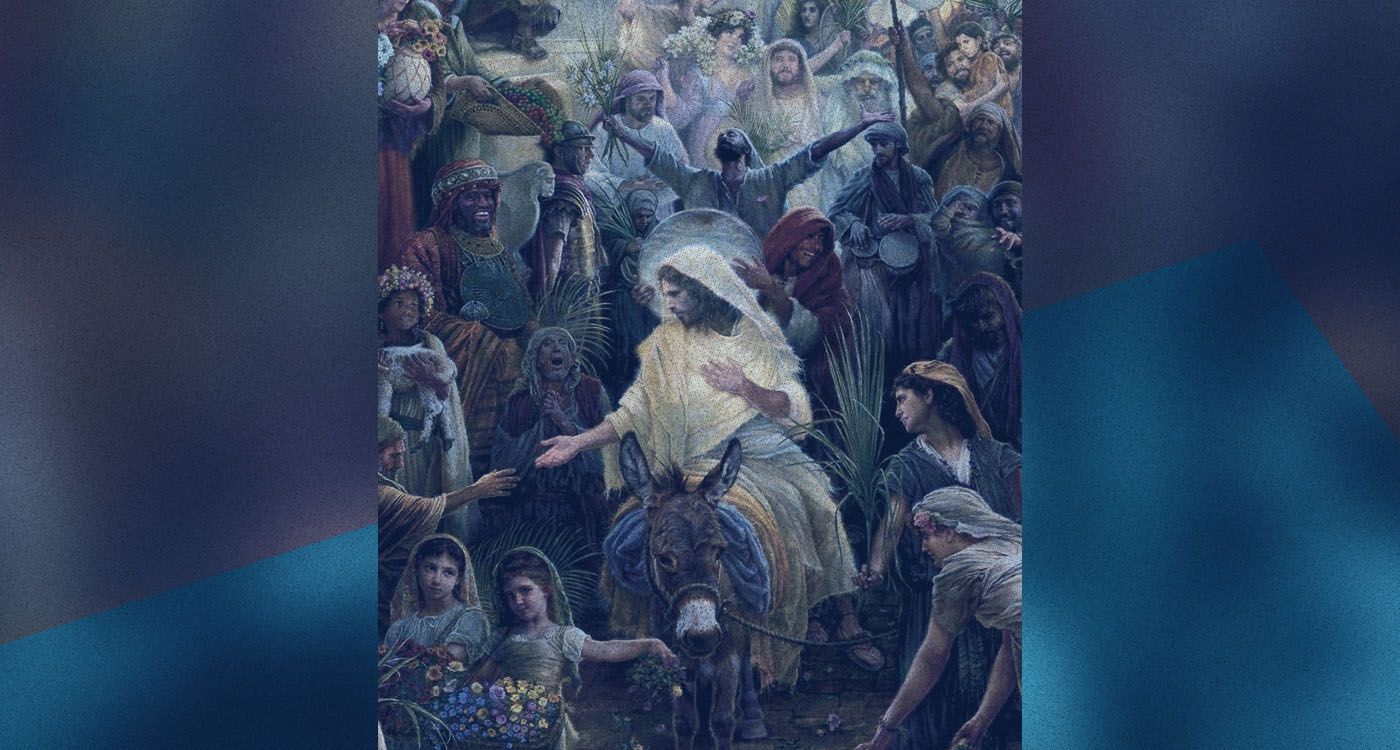
Jesus begins the final act of His earthly life with pure joy: the act of His Passion and His victory over death, the ultimate transformation of the human race. This pure joy is that of Palm Sunday, commemorated by the Church on the last Sunday of Lent. It is, in anticipation, the joy of Easter itself. Yet the shadow of the Cross subtly looms over it.
The Jewish festival of Passover is near. Jesus “ascends” to the temple, but this time He chooses to do so triumphantly. Planned and intended by Jesus, this messianic entry becomes an occasion for widespread celebration. He moves through the crowd, dressed, according to 19th-century visionary Anne Catherine Emmerich – whose accounts inspired filmmaker Mel Gibson – in a beautiful tunic, a belt and a stole, likely inscribed with the names of the tribes and biblical patriarchs. Riding a colt that His disciples have untied, as instructed, He advances confidently.
The “red carpet” is rolled out for Him: men, women and children come out to meet Him, holding palm branches, some laying greenery and garments along His path, shouting, “Hosanna! Blessed is He who comes in the name of the Lord!” When asked to silence the crowd, He refuses, and instead approves their praise. “If they remain silent, the stones will cry out!” He declares openly.
He has not spoken in secret during these past three years, though He conceals certain truths in parables. His reputation is widespread, and He has made many envious. Some Jews believe that if He were not close to God, He could never have performed the signs He is seen doing. However, many – among them the scribes, priests and Pharisees – are outraged by His words and distort them to suit their own purposes.
He has journeyed through the cities and villages of Palestine, preaching the coming of the Kingdom of God, healing the sick, and performing numerous miracles that demonstrate His power over life and nature. The most recent of these signs is particularly striking: the resurrection of Lazarus, a man who had been dead for four days, his body already beginning to decompose. These acts will alienate the religious leaders of His time. In addition to the direct challenge He represents, these influential figures and scholars of the Law live under Roman occupation and understand that the Romans do not tolerate any threats to public order.
Jesus understands that by acting as He does, death awaits Him. He also knows that this is the very purpose for which He came into the world. His disciples are deeply shocked when He shares this with them.
What He accomplishes carries a profound significance that His disciples have yet to fully understand. The man who steps forward embodies the ram whose horns were caught in a thicket, the one whom patriarch Abraham sacrificed instead of his son Isaac on Mount Moriah (Genesis 22:1-14). His entrance into the temple aligns with the day on which the unblemished lambs are chosen for the Passover sacrifice. He does not come to abolish but to fulfill.
Were human sacrifices common in the culture of that time? A few instances can be found in biblical texts. These are remnants of primitive beliefs, before faith in God had been fully purified. It is doubtful that the One who commanded, “You shall not kill,” would condone human sacrifices. Yet it is understandable, as the Danish philosopher Kierkegaard suggested, to be deeply troubled by the trial of offering Isaac. Some say there is a mysterious balance between the evil that corrodes and dominates the world and the offering to God that seeks to heal this metaphysical rift. The redemptive suffering, understood by the close companions of the “Son of Man,” remained a conscious reality for them until the very end, as embodied by John Paul II, even as Parkinson’s disease, which froze his face before the crowds, gradually took its toll.
The Feast of Palms, often transformed by Christians into a children’s parade with decorated candles, fails to capture the full depth of the faith. As noted earlier, the shadow of the Cross already casts its presence over the day. On His way to the temple, Jesus pauses and weeps. His tears are for Jerusalem. The God she has longed for, the Messiah she has awaited for centuries, is now in her midst, yet she does not recognize Him. Strangely enough, His heart holds a motherly affection for her – desiring to gather His people under His wings, even those who, only a few days later, will condemn Him to death for what they deem a blasphemous proclamation.
The world today is just as troubled as it was back then. Even now, the mockers and skeptics prevail. “Let Him come down from the cross now, and we will believe in Him!” We live in an age of intrigue and betrayal, of disrespect and destruction, of shamelessness, grandiosity, and the unchecked use of force. As an antidote to this, from the depths of the 7th century before Christ, rises the Song of the Servant from the prophet Isaiah: “Who has believed what we have heard, and to whom has the arm of the Lord been revealed? He grew up before us like a tender shoot, like a root out of dry ground. He had no beauty or majesty to attract us to Him, nothing in His appearance that we should desire. He was despised and rejected by mankind, a man of suffering, and familiar with pain. Like one from whom people hide their faces, He was despised, and we held Him in low esteem. Yet it was our weaknesses He carried, our sorrows that He bore. The punishment that brought us peace was upon Him, and by His wounds, we are healed.” (Isaiah 53:1-5)




Comments